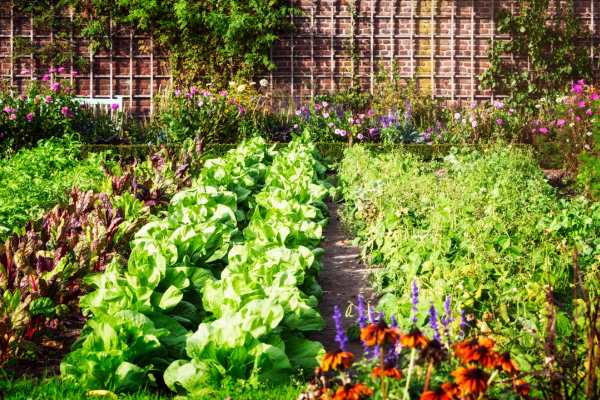Your cart is currently empty!

16 Aug Seasonal Gardening: What To Plant And When
Gardening is a dynamic and rewarding activity that changes with the seasons. As a young adult gardener, understanding what to plant and when can help you make the most of each season and ensure a thriving garden throughout the year. In this article, we will provide a seasonal guide, highlighting suitable plants for each season and their planting timelines. We will explore cool-season and warm-season crops, as well as year-round gardening options, to help you plan and maximize your gardening efforts.
1. Cool-Season Crops: Cool-season crops thrive in cooler temperatures and can be planted in early spring or fall, depending on your specific climate. These crops tolerate frost and cooler soil conditions, making them ideal for the transition periods between winter and summer. Here are some popular cool-season crops to consider:
- Leafy Greens: Lettuce, spinach, kale, and Swiss chard are excellent choices for cool-season gardening. Start planting them as soon as the soil can be worked in early spring or late summer for a fall harvest.
- Root Vegetables: Carrots, radishes, beets, and turnips are cool-season root vegetables. Sow their seeds directly into the ground in early spring or late summer for a fall crop.
- Brassicas: Cabbage, broccoli, cauliflower, and Brussels sprouts are part of the brassica family. Start them indoors from seeds 4-6 weeks before the last frost date or purchase transplants for an early spring planting.
2. Warm-Season Crops: Warm-season crops thrive in higher temperatures and require consistent warmth to grow and produce abundant yields. These crops are best planted in late spring or early summer when the soil has warmed up. Here are some popular warm-season crops to consider:
- Tomatoes: Tomatoes are a staple in many gardens. Start tomato seeds indoors 6-8 weeks before the last frost date and transplant them outside after all danger of frost has passed.
- Peppers: Peppers, both sweet and hot varieties, require warm temperatures to thrive. Start them indoors 8-10 weeks before the last frost date and transplant them outside when the soil and air temperatures are consistently warm.
- Cucumbers: Cucumbers are fast-growing and productive vines. Directly sow cucumber seeds into the ground after the last frost date or start them indoors a few weeks earlier for an earlier harvest.
- Beans: Both bush and pole beans are warm-season crops that can be directly sown into the garden after the last frost date. They are easy to grow and provide a bountiful harvest.
3. Year-Round Gardening Options: While certain crops have specific growing seasons, some gardening options allow you to enjoy fresh produce year-round. Here are a few options for year-round gardening:
- Perennial Vegetables: Consider planting perennial vegetables such as asparagus, rhubarb, or artichokes. These crops come back year after year, providing a consistent harvest.
- Herbs: Many herbs can be grown year-round, both indoors and outdoors. Some popular options include basil, rosemary, thyme, and mint. They add flavour to your dishes and can be harvested as needed.
Season Extension Techniques: Utilize season extension techniques such as cold frames, row covers, or hoop houses to protect your plants from frost and extend the growing season. These structures provide added insulation and allow you to grow crops earlier in the spring or later in the fall.
When planning your seasonal garden, consider your specific climate and local frost dates. Consult a planting calendar or gardening resources specific to your region to determine the optimal planting times for various crops. Remember, gardening is a continuous learning process, and each season presents new opportunities to experiment and grow. Take note of your successes and challenges each season, adjusting your gardening plans accordingly. Keep a garden journal to record planting dates, harvest yields, and any observations or lessons learned.
To make the most of your seasonal gardening journey, the Environmental Factor website is your trusted source for all your gardening needs. With our commitment to sustainability and eco-friendly practices, you can trust that the products you purchase align with your values. Visit the Environmental Factor website now and let your garden flourish with their exceptional gardening products. Happy gardening and may your harvest be abundant!


